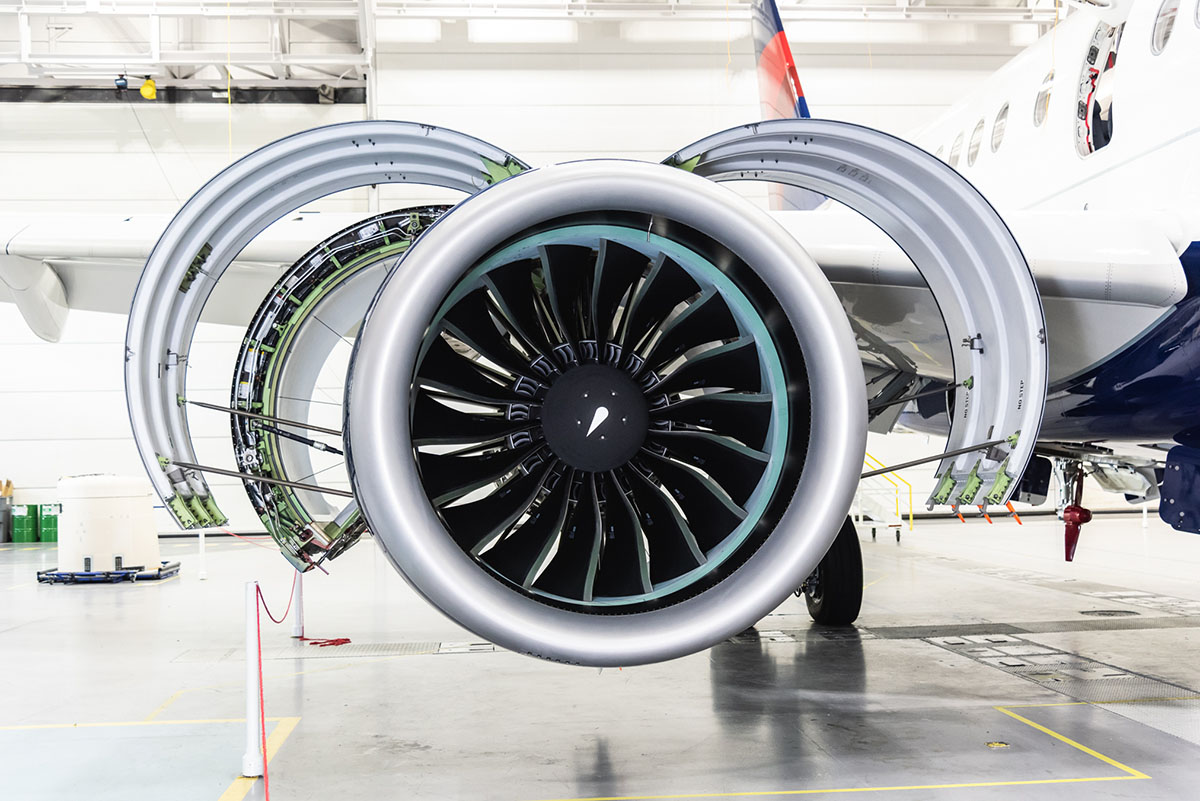
How Delta is mapping a path to zero impact aviation - Carbon Reduction and Removal
At Delta, we believe customers shouldn’t have to choose between seeing the world and saving it.
CARBON REDUCTION AND REMOVAL
As Delta works to solve its largest impact on the environment—carbon dioxide emissions—it plans to invest in innovative solutions, like carbon capture and storage and sustainable aviation fuels (SAF). SAF and other advanced technologies are not available on a large enough scale to meet today’s industry demands. The market is so underdeveloped that all SAF produced in 2020 would only power Delta’s fleet for one day pre-COVID. This is why investments, guided by a strong long-term vision, are so critical.

Building a more efficient fleet
In 2020, Delta retired more than 200 older aircraft. The new aircraft replacing those planes are 25 percent more fuel efficient per seat mile than the aircraft they replace.
Due to those fleet decisions and reduced passenger loads amid COVID-19, Delta’s fleet was nearly six percent more fuel efficient per available seat mile in 2020 than in 2019, saving 117 million gallons of fuel. That is equal to the emissions from annual electricity consumption of almost 200,000 households, or roughly all households in the city of Atlanta.
Investing in SAF and other advanced technologies
Delta will invest in the acceleration of three promising advancements critical to a cleaner future of commercial aviation. While these technologies are nascent and very expensive today, Delta believes they have great future potential and are the first steps towards zero-impact aviation.
- SAF is an alternative to fossil fuel and can reduce emissions by up to 80 percent during its full lifecycle. Examples include bio-fuels and synthetic fuels. Delta’s medium-term goal is to replace 10 percent of its jet fuel refined from fossil fuel with SAF by the end of 2030. The company has agreed to purchase a future supply of 70 million gallons of sustainable aviation fuel per year. That includes 10 million beginning in 2024 from Gevo and 60 million beginning in 2025 from Northwest Advanced Bio-Fuels, representing a projected 1.7 percent of Delta’s total annual fuel consumption, adjusted for 2019 flying levels.
- Carbon capture and storage technology need to progress to serve the expected demand for carbon dioxide removal from the atmosphere, especially for hard-to-abate sectors like aviation. In the meantime, technologies like direct air capture have the potential to scale. Captured carbon can also be used to create fuels.
- Innovations in propulsion, post-combustion emission controls, electric power delivery and fuel cells would substantially address emissions but are far from commercial aviation applications. Beyond aircraft changes, significant investments in infrastructure, like clean energy and hydrogen fuel generation, would also be required for commercially viable solutions. Although these technologies are still in the early stages of development and are not expected to enter service anytime soon, Delta is evaluating partnerships to accelerate and support their advancement.
Reducing emissions through carbon offsets
In the near-term, Delta will invest in verified carbon offsets to achieve carbon neutrality and ensure forests are maintained, protected and expanded.
In addition to exploring investments in SAF and research and development for new technologies, Delta plans to spend more than $30 million to address 13 million metric tons of carbon dioxide emissions from March 1 to Dec. 31, 2020 through an offset portfolio. That is equal to the carbon sequestered by 17 million acres of U.S. forests in one year, enough to cover the state of West Virginia. A carbon offset is a verified, quantifiable emissions reduction as a result of an investment in a project designed to avoid, reduce or remove carbon dioxide from the atmosphere.
Two projects in Delta’s offset portfolio are Rimba Raya and Keo Seima, which protect forests through a community-driven conservation model involving local communities in Indonesia and Cambodia.

These investments support the cost of running the programs and conserving more than half a million acres of forests while avoiding the release of an average of 5 million metric tons of carbon to the atmosphere per year.
All of Delta’s offset projects are independently audited against leading, third-party standards.
Delta’s goal is to have an offset portfolio that includes:
- Carbon Avoidance Projects: Deforestation contributes 10 to 15 percent of carbon emissions globally. These projects prevent deforestation to ensure that some of the world’s largest forests remain intact and continue to absorb and store carbon dioxide. Many of these projects are REDD+ (Reducing Emissions from Deforestation and forest Degradation) projects backed by a United Nations framework that aims to curb climate change.
- Carbon Reduction Projects: Investing in converting from emissions-intensive energy sources, like coal, to sources like wind and solar serves as a foundation for reducing emissions.
- Carbon Removal Projects: This refers to nature-based solutions such as afforestation and reforestation, where additional trees are planted or areas are restored in an effort to absorb additional carbon dioxide from the atmosphere.
Learn more about Delta's path to sustainability in the Part 3 of this news series or visit Delta NewsHub .









